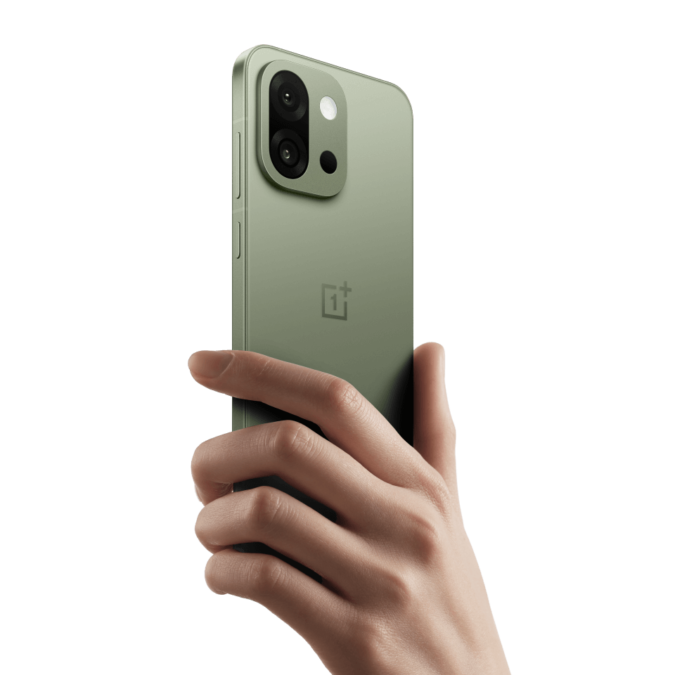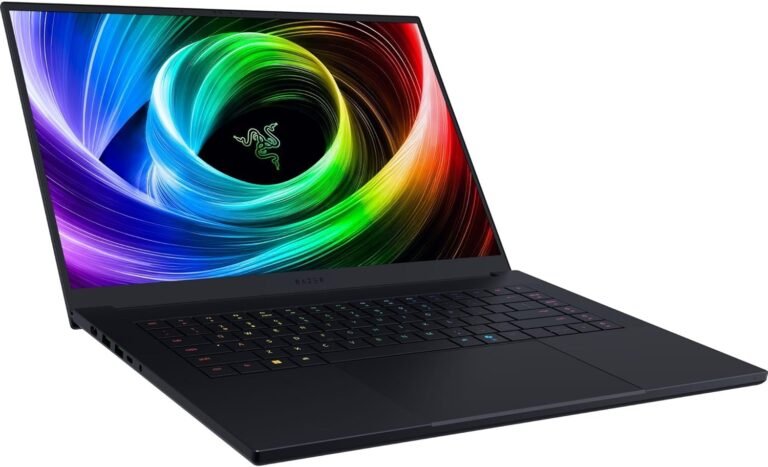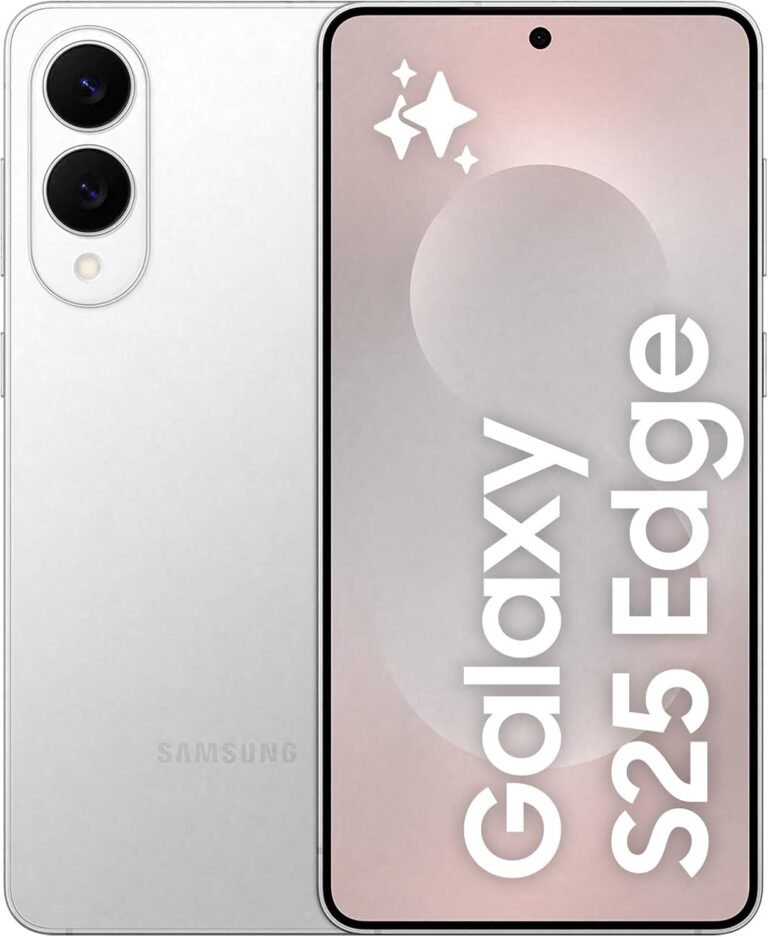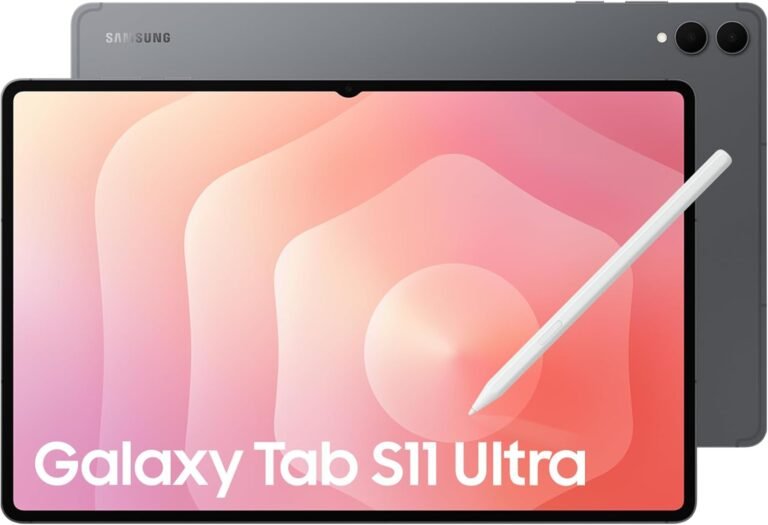1. Introduction:
The OnePlus 13S, which was announced for the Indian market on June 5, 2025, represents a focused effort by the manufacturer to revitalise the compact flagship smartphone segment. In an era where large displays have become the standard for high-end devices, the OnePlus 13S establishes a distinct identity by offering top-tier processing power and a suite of modern features within a smaller, more ergonomic chassis designed for comfortable one-handed use. With a starting price point of ₹49,999, the device is positioned to appeal to users who desire premium performance without the physical size or premium cost typically associated with flagship models.
2. Design and Build Quality
Physical Dimensions and Handling
The defining characteristic of the OnePlus 13S is its compact and manageable size. The device measures 150.8 mm in height, 71.7 mm in width, and 8.2 mm in thickness. These dimensions, combined with a relatively low weight of 185 grams, are central to its identity as a “per-fit handy” device that is optimised for one-handed operation. OnePlus has engineered the device with what it describes as a “perfectly balanced weight-to-hand ratio,” achieved through a deliberate 50:50 weight distribution that places heavier components in the lower half to counteract the mass of the camera module at the top. This attention to balance aims to provide a comfortable and secure in-hand feel during extended use.
The physical design features a flat aluminium alloy frame, a choice that has drawn comparisons to contemporary iPhone designs. To mitigate the sharpness often associated with flat-sided phones, the edges are slightly rounded, ensuring the device does not dig into the user’s palm during use. This combination of a compact footprint, low weight, balanced mass, and considered edge treatment underscores a design philosophy prioritising ergonomics and usability above all else.
Materials, Finish, and Aesthetics
The OnePlus 13S is constructed from a glass front and an aluminium alloy frame, materials consistent with its premium positioning. The device is available in three distinct colour options: Green Silk, Pink Satin, and Black Velvet. The back panel utilises what OnePlus calls “Velvet Glass” technology, which imparts a soft, textured matte finish. This surface treatment serves a dual purpose: it provides a unique tactile experience while also offering practical resistance to fingerprints, a common issue with glossy glass-backed phones.
Aesthetically, the OnePlus 13S marks a departure from the prominent circular camera modules seen on its recent predecessors. Instead, it adopts a more restrained rectangular camera housing located in the top-left corner of the rear panel. This new design aligns the device with a more minimalist aesthetic and further differentiates it visually within the broader OnePlus product family.
Durability and Ingress Protection
For protection against environmental factors, the OnePlus 13S carries an official Ingress Protection rating of IP65. This certification provides a specific level of durability. The ‘6’ indicates that the device is fully dust-tight, offering complete protection against the ingress of solid particles. The ‘5’ signifies that the enclosure is protected against low-pressure water jets from any direction. In practical terms, this means the phone is well-equipped to handle exposure to rain, splashes, and other common encounters with water, but it is not rated for submersion. The front of the device is protected by a layer of Crystal Shield Glass.
The choice of an IP65 rating, rather than the higher IP68 or IP69 ratings found on the flagship OnePlus 13, is a clear and deliberate product differentiation strategy. Achieving a rating for full water submersion requires more complex engineering, gaskets, and sealing processes, which invariably increase manufacturing costs. By selecting the IP65 standard, OnePlus provides a robust level of protection against the most common everyday hazards while avoiding the additional expense of full waterproofing. This calculated cost-saving measure allows the company to allocate its budget towards other high-cost, high-performance components, such as the flagship Snapdragon 8 Elite chipset and the large-capacity battery, which were deemed more critical to the core value proposition of this particular device. This strategic trade-off is a recurring theme in the engineering of the OnePlus 13S, positioning it as a value-oriented flagship that prioritises performance over ultimate durability.
The Plus Key
One of the most significant hardware changes on the OnePlus 13S is the replacement of the company’s signature Alert Slider with a new, programmable button named the ‘Plus Key’. For years, the three-position Alert Slider was an iconic feature of OnePlus devices, offering a quick, tactile way to switch between sound profiles. Its removal in favour of the Plus Key represents a fundamental shift in the company’s approach to hardware interaction, moving from a single-function mechanical switch to a versatile, software-driven button. This evolution is positioned not as a removal of functionality but as an expansion of capability, aiming to provide users with a more powerful and personalisable tool.
The Plus Key is not merely a convenience feature; it is positioned as the primary hardware interface for the device’s new AI-centric software ecosystem. While it can be programmed for various utility tasks, its default and most heavily promoted function is to activate ‘AI Plus Mind’. By giving the AI suite a dedicated physical button, OnePlus makes it a tangible and immediate part of the user experience, rather than a feature hidden within software menus. The name ‘Plus Key’ was chosen to represent “addition, expansion, and possibility,” directly aligning the hardware with the evolving, learning nature of artificial intelligence. This decision to replace a beloved, simple hardware control with an AI-focused one is a strong statement that intelligent software interaction is now considered more central to the OnePlus experience than simple audio management.

Functionality and Customisation
The Plus Key is designed to be a multi-functional tool, and users can assign it to trigger a range of different actions. The confirmed list of programmable functions provides a blend of utility, convenience, and AI integration. These actions include:
- AI Plus Mind: The key’s primary function, which captures and analyses on-screen content for a smart digital scrapbook.
- Sound Profile Switching: The Plus Key can replicate the functionality of the old Alert Slider. A long press cycles through Ring, Vibrate, and Silent modes, preserving the core function of its predecessor.
- Camera Launch: The key can be set to open the camera application. Users can specify whether it opens to the main Photo mode, Portrait mode, Video mode, or other specific camera interfaces.
- Utility Functions: A range of common tasks can be mapped to the key, such as activating the torch (flashlight), starting or stopping an audio recording with the Recorder app, or launching the AI-powered Translate app.
- Screenshot: The key can be configured to capture a screenshot, offering an alternative to the standard power and volume button combination.
Limitations and Future Potential
Despite its versatility, the Plus Key has some limitations in its initial implementation. The most significant is that it can only be assigned to a single action at a time. There is currently no support for multi-press gestures, such as assigning different functions to a double-tap or triple-tap, which could greatly expand its utility. Some user feedback has also pointed out that the physical placement of the key on the phone’s frame is slightly too high for optimal ergonomic reach.
However, OnePlus has indicated that the Plus Key is designed as an evolving platform, not a static feature. The company has suggested that its functionality will grow alongside the capabilities of OxygenOS and OnePlus AI, with the potential for new actions and more complex interactions to be added via future software updates. This leaves the door open for addressing current limitations and further enhancing its role as a central part of the device’s user experience.
Display Analysis and Performance
The display of the OnePlus 13S stands out as one of its core, uncompromised features. While strategic trade-offs were made in other areas of the device, the screen specifications are unequivocally flagship-grade, suggesting OnePlus identified display quality as a non-negotiable component for delivering a premium user experience. The panel is the primary interface for every task, and its high quality directly translates to a more satisfying interaction, from simple navigation to immersive media consumption.
Panel Specifications
The device is built around a 6.32-inch LTPO AMOLED display. It features a 1.5K resolution of 1216 x 2640 pixels, which translates to a pixel density of approximately 460 pixels per inch (ppi), ensuring sharp and detailed visuals. The panel’s support for 1 billion colours contributes to rich and accurate colour reproduction.
A key technology employed is LTPO (Low-Temperature Polycrystalline Oxide), which allows for a fully dynamic refresh rate that can vary between 1Hz and 120Hz. This means the screen can refresh at a fluid 120Hz for smooth scrolling and animations, then intelligently drop to a much lower rate for static content, such as when viewing a photo or reading text. This dynamic adjustment significantly improves power efficiency without sacrificing visual smoothness. The display also features uniform bezels on the top and sides, measuring just 1.34mm, which enhances its immersive quality. The bottom bezel is slightly thicker at 1.8mm.
Brightness, HDR, and Colour
The display’s brightness capabilities are robust, making it suitable for use in a variety of lighting conditions. It features a High Brightness Mode (HBM) that can reach 1600 nits, ensuring clear visibility even under bright, direct sunlight. This addresses a critical practical usability concern for mobile devices.
Furthermore, the OnePlus 13S offers comprehensive support for multiple High Dynamic Range (HDR) formats. This includes Dolby Vision, HDR10+, and HDR Vivid. This wide-ranging format compatibility ensures that users can experience enhanced contrast, brightness, and colour when streaming content from major platforms that provide HDR video, making it a capable pocket-sized cinema.
Interactive and Protective Features
Beyond its core visual specifications, the display incorporates several features designed to improve interaction and durability. A notable inclusion is Aqua Touch 2.0, a technology that maintains smooth and responsive touch input even when the screen or the user’s fingers are wet, a common scenario where many touchscreens struggle.
For user comfort, the device includes several eye care features. Intelligent Eye Care mode adjusts the display’s colour temperature based on ambient light, while high-frequency 2160Hz PWM (Pulse-Width Modulation) dimming is used to control brightness. This method significantly reduces the screen flicker that can occur at low brightness levels on some OLED panels, minimising potential eye strain during night-time use. The front of the display is protected by a layer of Crystal Shield Glass for scratch and impact resistance.
Core Performance and System Architecture
System-on-Chip (SoC) Deep Dive
At the heart of the OnePlus 13S is the Qualcomm SM8750-AB Snapdragon 8 Elite Mobile Platform, the same top-tier chipset found in larger, more expensive flagship phones of its generation. Manufactured on an advanced 3nm process, this SoC is designed for high performance and improved efficiency. Its octa-core CPU architecture is built around Qualcomm’s custom Oryon cores, configured with two high-performance V2 Phoenix L cores clocked at up to 4.32 GHz and six efficiency-focused V2 Phoenix M cores running at up to 3.53 GHz. This powerful CPU configuration is complemented by the Adreno 830 GPU, which handles demanding graphical tasks such as gaming and high-resolution video playback.
According to official materials, this platform delivers a significant performance uplift, with claims of a 45% improvement in CPU performance and a 40% increase in GPU performance, alongside a 27% gain in overall efficiency for longer battery life. This level of processing power is central to the phone’s “compact powerhouse” identity, ensuring that its smaller size does not come at the cost of raw speed.
Memory and Storage Subsystems
To support the powerful SoC, the OnePlus 13S is equipped with modern, high-speed memory and storage components. The device is available in two configurations, both featuring 12GB of LPDDR5X RAM. This is paired with either 256GB or 512GB of UFS 4.0 internal storage. The use of LPDDR5X RAM and UFS 4.0 storage ensures fast app loading times, smooth multitasking, and quick file transfers, contributing to a responsive overall system experience. It is important to note that the device does not include a microSD card slot, meaning the internal storage is not user-expandable.
Thermal Management System
Sustaining high performance, especially in a compact chassis, requires an effective thermal management system. The OnePlus 13S employs what the company calls a Cryo-Velocity cooling system, which is centred around a large 4400mm² vapour chamber (VC). This VC features an exclusive 3D cooling structure designed to efficiently dissipate heat generated by the SoC during intensive tasks like gaming or video recording. OnePlus claims that its industry-leading cooling layer is 65% more efficient at heat transfer compared to a standard design without this layer. This system is crucial for preventing thermal throttling, where the processor slows down to manage heat, thereby ensuring that the device can maintain peak performance for longer periods.
Gaming and Sustained Performance
Real-World Gaming Evaluation
Moving beyond synthetic benchmarks, the OnePlus 13S demonstrates its performance credentials in demanding, real-world gaming scenarios. The combination of the Snapdragon 8 Elite SoC, fast LPDDR5X RAM, and the effective Cryo-Velocity cooling system enables a high-end gaming experience. Reports indicate that the device can run graphically intensive titles such as Genshin Impact and Call of Duty at their highest settings with stable frame rates and no noticeable lag.
The device has been specifically tested with Battlegrounds Mobile India (BGMI), where it is capable of maintaining a stable 120 frames per second for extended periods, with one report citing up to seven hours of continuous play at this high frame rate. This level of sustained performance is a testament to the phone’s hardware and thermal management. Users have noted that the device remains relatively cool, getting only slightly warm even during long gaming sessions, which is a significant achievement for a compact device housing such a powerful processor.
Gamer-Centric Software and Hardware Features
OnePlus has equipped the 13S with several features specifically tailored to enhance the gaming experience. These go beyond raw performance and address practical concerns for gamers.
One of the most notable features is bypass charging. When enabled during a gaming session, this function allows the phone to draw power directly from the charger, bypassing the battery. This has two key benefits: it significantly reduces the amount of heat generated during simultaneous charging and gaming, and it helps preserve the long-term health of the battery by reducing charge cycles under high-load conditions.
The software includes a dedicated Game Mode or Game Control Centre, which acts as a hub for various gaming-related settings and tools. This interface allows users to block notifications and calls for an uninterrupted session, as well as access performance-tuning options. Advanced users can fine-tune GPU settings, including Multi-Sample Anti-Aliasing (MSAA) and anisotropic filtering, providing a level of granular control over graphical fidelity and performance typically reserved for PC gaming.
The device’s advanced connectivity hardware also plays a role. OnePlus claims that the new omni-directional antenna system and the proprietary G1 Wi-Fi chipset can lead to up to 40% less latency when playing games like BGMI on weak or congested networks, providing a more stable online experience.
While the OnePlus 13S is engineered to be a gaming powerhouse, its compact form factor presents a notable consideration. The device’s primary selling point is its manageable 6.32-inch screen, which, while excellent in quality, offers less physical real estate than the larger displays common on other flagship phones. This has been pointed out by reviewers, who note that the smaller screen might be less immersive for certain types of games, particularly open-world titles where a larger view is advantageous. This creates a unique dynamic: the phone possesses the internal hardware to compete with the best gaming phones on the market, but its screen size is a matter of user preference. It is therefore best suited for gamers who prioritise portability, one-handed comfort, and top-tier performance, and are willing to trade a larger, more immersive screen for these benefits.
Camera: Dual-Lens Approach
The camera system on the OnePlus 13S is a clear example of the device’s overall design philosophy: prioritising high-quality core components while making strategic omissions to maintain its target price and form factor. Instead of a triple-camera array, OnePlus has opted for a dual-lens setup that focuses on a capable main sensor and a functional telephoto lens, forgoing an ultrawide camera entirely.
Rear Camera Hardware Analysis
The rear camera hardware is shared with the OnePlus 13R model, indicating a degree of platform standardisation within the product line. The system is housed in a redesigned rectangular module.
The main camera is built around the 50-megapixel Sony LYT-700 sensor. This is a 1/1.56-inch sensor with 1.0µm pixels, paired with a 6-element lens that has a bright f/1.8 aperture and a 24mm equivalent focal length. To ensure sharp images and stable video, this camera is equipped with both multi-directional Phase Detection Autofocus (PDAF) and Optical Image Stabilisation (OIS).
The telephoto camera provides a 2x optical zoom and also uses a 50-megapixel sensor, specifically the Samsung ISOCELL S5KJN5. This is a smaller 1/2.75-inch sensor with 0.64µm pixels, matched with a 5-element lens featuring an f/2.0 aperture. While it includes PDAF for focusing, a crucial distinction is that it relies solely on Electronic Image Stabilisation (EIS) for stabilisation; it does not have OIS. The lack of OIS on the telephoto lens is a notable compromise, as it can make it more challenging to capture sharp, steady shots at the 2x zoom level, especially in lower light conditions.
The most significant compromise in the camera system is the omission of an ultrawide lens. This decision was likely driven by constraints of cost and internal space within the compact chassis. While this limits the camera’s versatility for capturing expansive landscapes or large group shots, some user feedback suggests that if a choice must be made between a telephoto and an ultrawide, the former is often preferred, though the modest 2x optical zoom on the 13S may not fully satisfy users seeking significant magnification capabilities.
Front Camera Analysis
The front-facing camera is a key area of upgrade for the OnePlus 13S compared to its Chinese counterpart. It is a 32-megapixel shooter that, for the first time on a OnePlus device, incorporates autofocus (AF). This is a significant enhancement for selfie quality, ensuring the subject remains sharp regardless of distance from the lens. The camera uses a 1/3.1-inch sensor with 0.7µm pixels and is paired with a lens that has an f/2.0 aperture and a 21mm equivalent focal length. One source identifies the specific sensor model as the Galaxycore GC32E. This upgraded front camera is capable of capturing sharp, detailed self-portraits and supports video recording with EIS.
Video Recording Capabilities
The OnePlus 13S offers a robust suite of video recording features. The rear camera system can capture video at resolutions up to 4K at both 30 and 60 frames per second, as well as 1080p slow-motion video at up to 240fps. Video footage benefits from stabilisation provided by gyro-EIS across both lenses and OIS on the main lens. A notable premium feature is support for
Dolby Vision HDR video recording, which allows for footage with enhanced brightness, contrast, and colour when viewed on a compatible display.
The front camera is also capable of recording 4K video, though it is limited to a maximum frame rate of 30fps. The absence of 4K 60fps recording on the front camera is a minor limitation for content creators who may desire smoother high-resolution vlogging footage.
AI-Powered Photography Features
The camera experience is augmented by a suite of AI-powered post-processing tools integrated into the gallery application. These features, part of the broader OnePlus AI suite, are designed to enhance and simplify photo editing:
- AI Detail Boost: Sharpens details in photos, which is particularly useful for maintaining clarity after cropping an image.
- AI Unblur: Uses AI to sharpen images that suffer from minor motion blur, improving the clarity of portraits of people and pets.
- AI Reflection Eraser: A one-tap tool designed to intelligently identify and remove unwanted glare and reflections from photos taken through glass.
- AI Reframe: Analyses a photo and suggests alternative compositions, automatically reframing the shot to create a more balanced or visually interesting image.
The following table provides a consolidated overview of the camera hardware specifications.
| Camera | Main (Wide) | Telephoto | Front |
| Sensor Model | Sony LYT-700 | Samsung S5KJN5 | Galaxycore GC32E |
| Megapixels | 50MP | 50MP | 32MP |
| Sensor Size | 1/1.56″ | 1/2.75″ | 1/3.1″ |
| Pixel Size | 1.0µm | 0.64µm | 0.7µm |
| Aperture | f/1.8 | f/2.0 | f/2.0 |
| Focal Length (equiv.) | 24mm | 2x Optical Zoom | 21mm |
| Stabilisation | OIS + EIS | EIS only | EIS only |
| Autofocus | Multi-directional PDAF | PDAF | AF |
| Source(s) |
Battery Endurance and Charging Technology
Battery Capacity and Real-World Longevity
One of the most impressive specifications of the OnePlus 13S, particularly given its compact dimensions, is its large 5850mAh battery. This capacity is substantial for any flagship phone and is a key selling point, promising excellent endurance.
Performance in standardised tests and real-world usage presents a varied but generally positive picture. A lab test using the PCMark battery benchmark yielded a result of 16 hours and 34 minutes, indicating strong performance in mixed productivity tasks. A continuous video playback drain test lasted for 10 hours and 35 minutes, from which reviewers estimated a typical real-world screen-on-time (SoT) of around 8 to 8.5 hours under mixed usage conditions.
User-reported experiences naturally vary depending on usage patterns. One report of heavy usage, which included using the phone as a portable hotspot for other devices, resulted in a SoT of approximately 5 hours and 14 minutes. Conversely, other users have reported achieving over 7 hours of SoT with more typical mixed usage involving Wi-Fi and mobile data. One user also noted a standby battery drain of around 7% over an 8-hour overnight period. Collectively, the data suggests that the OnePlus 13S offers solid, all-day battery life for most users, with the potential for exceptional endurance under lighter workloads.

Wired Charging Performance
The OnePlus 13S charges really fast with its 100W wired charger. You can go from almost empty to full in about 25 minutes, which is great when you’re in a hurry. It also keeps the phone cool while charging and helps protect the battery over time. Overall, it’s super quick and easy to use without worrying about overheating or damage.
What’s Missing
In line with the device’s strategic focus on core features and cost management, the OnePlus 13S does not support wireless charging. This is a deliberate omission to save on internal space and component costs, features which are instead allocated to the large battery and high-performance processor. However, the device does offer a degree of power-sharing capability through
5W reverse wired charging, allowing it to be used as a power bank to charge other devices, such as earbuds or a smartwatch, via a USB-C cable.
Connectivity and Audio Subsystems
Network and Wireless Connectivity
The OnePlus 13S is equipped with a modern and comprehensive suite of connectivity technologies, ensuring it is prepared for current and future network standards.
For cellular connectivity, the device supports 5.5G networks, providing a degree of future-proofing. It includes extensive support for a wide range of 5G bands in both Standalone (SA) and Non-Standalone (NSA) modes, ensuring broad compatibility with global 5G networks.
Wireless networking is a key area of innovation for this device. It supports the latest Wi-Fi 7 (802.11be) standard, offering the potential for higher speeds, lower latency, and better performance in congested environments. This is enabled by the introduction of the
OnePlus G1, the company’s first-ever independently designed Wi-Fi chipset. This custom silicon is paired with an advanced 11-antenna omni-directional system, which is designed to provide a more stable and faster connection, particularly in challenging scenarios like crowded public spaces or areas with weak signals.
The device also features Bluetooth 6.0 for connecting to wireless peripherals, along with Near Field Communication (NFC) for contactless payments and an Infrared (IR) port, which allows the phone to function as a universal remote for controlling other electronic devices.
Physical Ports
The OnePlus 13S uses a USB Type-C port for charging and data transfer. However, this port is limited to the USB 2.0 standard. This is a significant and deliberate cost-saving measure. While USB 2.0 speeds (up to 480 Mbps) are sufficient for charging and everyday use, they are substantially slower for transferring large files compared to the USB 3.x standards (5 Gbps or higher) found on more expensive flagship phones. This is a clear compromise that will primarily affect users who frequently move large video files or other data to or from their device via a wired connection.
Audio Hardware and Codec Support
The audio subsystem of the OnePlus 13S presents another area of strategic choices. The device is equipped with dual stereo speakers, with the earpiece serving as the second channel. User feedback suggests the speakers are loud and clear, providing a solid audio experience for media consumption and calls, though some note a slight imbalance due to the use of the earpiece speaker. The haptic feedback is delivered by an X-axis linear motor, which provides precise and responsive vibrations for system interactions and notifications.
A notable omission is official licensing for Dolby Atmos. This has been a point of discussion among users, as the feature is present on other OnePlus devices. Instead of Dolby Atmos, the phone utilises a proprietary solution called
OReality Audio. This software provides different sound profiles that can be selected for specific scenarios, such as watching movies, gaming, or listening to music, aiming to provide a tailored audio experience without the associated licensing fees of the Dolby standard.
For wireless audio, the device offers excellent support for high-quality Bluetooth codecs, which is crucial for users with high-fidelity wireless headphones or earbuds.
| Bluetooth Codec | Description |
| SBC | Standard, universal codec |
| AAC | High-quality codec, common for Apple devices |
| aptX | Higher quality than SBC |
| aptX HD | High-resolution audio codec |
| LDAC | High-resolution audio codec developed by Sony |
| LHDC 5.0 | High-resolution audio codec |
This comprehensive codec support ensures that audiophiles can achieve the best possible sound quality over a Bluetooth connection, provided they have compatible audio hardware.
Software: OxygenOS 15 and the OnePlus AI Suite
Operating System Experience
The OnePlus 13S runs on OxygenOS 15, which is based on the Android 15 operating system. OnePlus has committed to a strong software support policy for the device, promising
four years of major Android version updates and six years of security patches. This long-term support adds significant value and ensures the device will remain secure and up-to-date for an extended period.
The user experience of OxygenOS 15 is generally praised for its smooth animations, clean interface, and robust customisation options. However, the software is not without its criticisms. Some users have reported that the operating system is overly aggressive in its background app management, sometimes closing applications that are intended to be running in the background, which can interfere with certain workflows. Another point of contention is the inclusion of pre-installed applications, or bloatware, which some users find detracts from the otherwise clean software experience. Despite these issues, the core functionality is stable, and the OS includes appreciated features like robust multitasking capabilities inherited from larger-screen devices.
The OnePlus AI Ecosystem
A central focus of the software experience on the OnePlus 13S is the introduction of OnePlus AI, an umbrella term for a comprehensive suite of artificial intelligence features integrated throughout the operating system. These tools are designed to enhance productivity, creativity, and overall usability.
The flagship feature of this suite is AI Plus Mind. This tool can be activated either with the new Plus Key or a three-finger swipe-up gesture. When triggered, it captures the content currently on the screen and uses AI to analyse and catalogue it within a dedicated application called “Mind Space”. This goes beyond a simple screenshot; the system can use computer vision to understand the content. For example, it can extract event details from an image of a poster and offer to add them directly to the user’s calendar. This creates a searchable, intelligent scrapbook of information that users want to save, which can be queried using natural language.
Beyond this central feature, OnePlus AI includes a range of specialised tools:
Productivity AI Tools:
- AI VoiceScribe: This tool offers real-time recording, transcription, summarisation, and translation for audio from calls and meetings, integrated into popular communication apps.
- AI Call Assistant: Available in the OnePlus Dialer, this feature provides live, in-call translation and generates summaries of phone conversations after they have concluded.
- AI Translation: A consolidated application that brings together text, voice, and camera-based translation functions into a single, unified interface.
- AI Search: An on-device search function that allows users to find files, notes, and other content using natural language queries.
Creative and Photo AI Tools:
- This suite of tools, integrated into the gallery and camera apps, uses AI to simplify and enhance photo editing. It includes AI Reframe for suggesting better compositions, AI Detail Boost for sharpening images, AI Unblur for correcting motion blur, AI Reflection Eraser for removing glare, and AI Best Face 2.0 for improving group photos by correcting closed eyes or suboptimal expressions.
Privacy and Integration: To address privacy concerns associated with AI, OnePlus is implementing a hybrid on-device and cloud processing model. Sensitive data is processed locally on the device within a secure Trusted Execution Environment (TEE). For more computationally intensive tasks, data is sent to the company’s
Private Computing Cloud (PCC), an encrypted platform designed to keep user data secure during processing and transmission. The AI suite is also set to feature deeper integration with
Google’s Gemini large language model, which will power more advanced contextual features across the operating system.
Final Verdict
The OnePlus 13S is a testament to focused product design. It does not aspire to be the ultimate “everything phone” that ticks every single box. Instead, it aims to be the ultimate “compact powerhouse,” and in this, it largely succeeds. The device is engineered for a specific type of user: one who places a premium on top-tier processing performance, long battery life, and comfortable one-handed usability, and who is willing to accept specific, well-defined compromises in other areas to achieve these goals.
For this target audience, the OnePlus 13S offers a compelling and almost unmatched value proposition. It proves that a smaller form factor does not have to mean a significant sacrifice in power or endurance, making it a standout option for those seeking flagship speed in a more manageable package.







